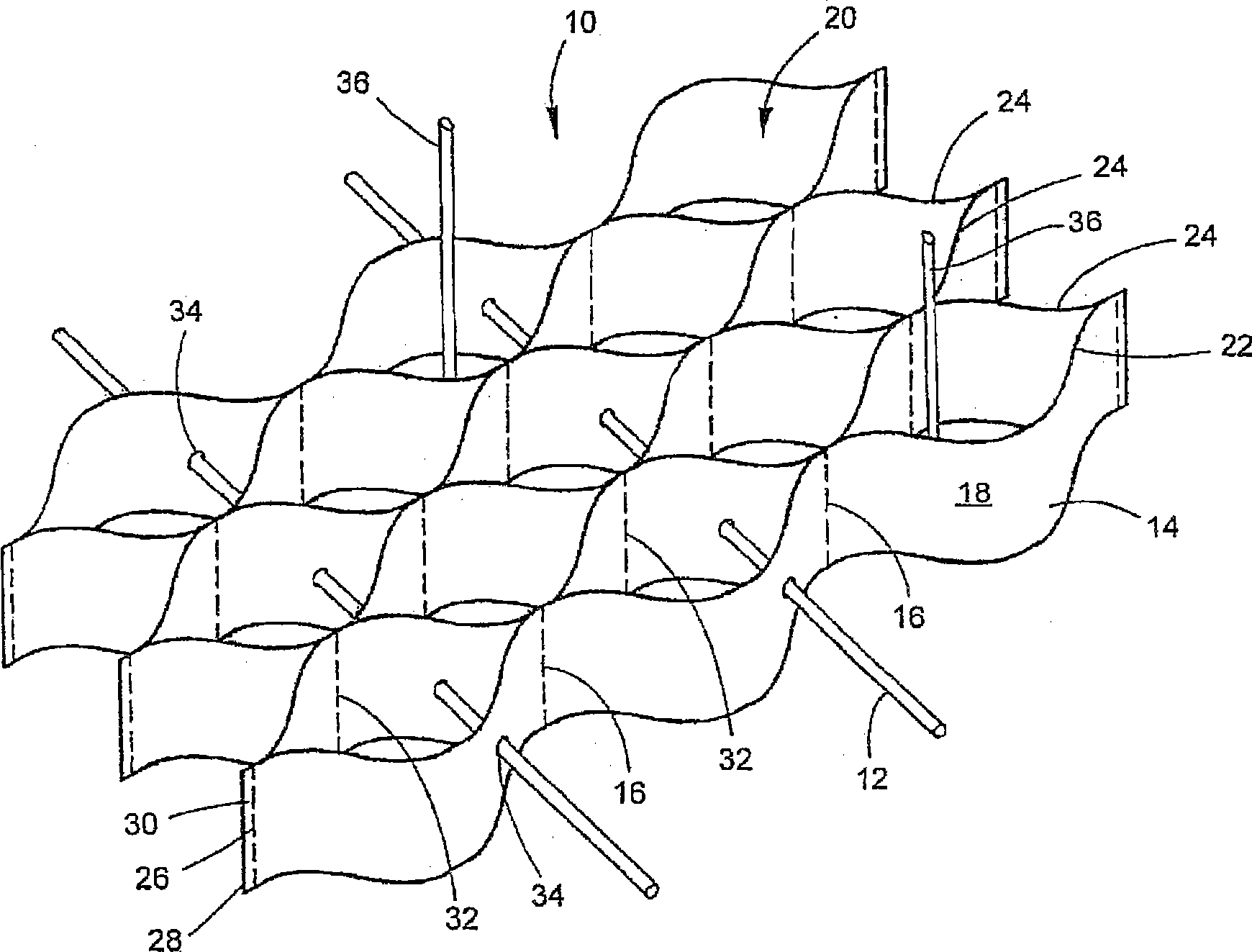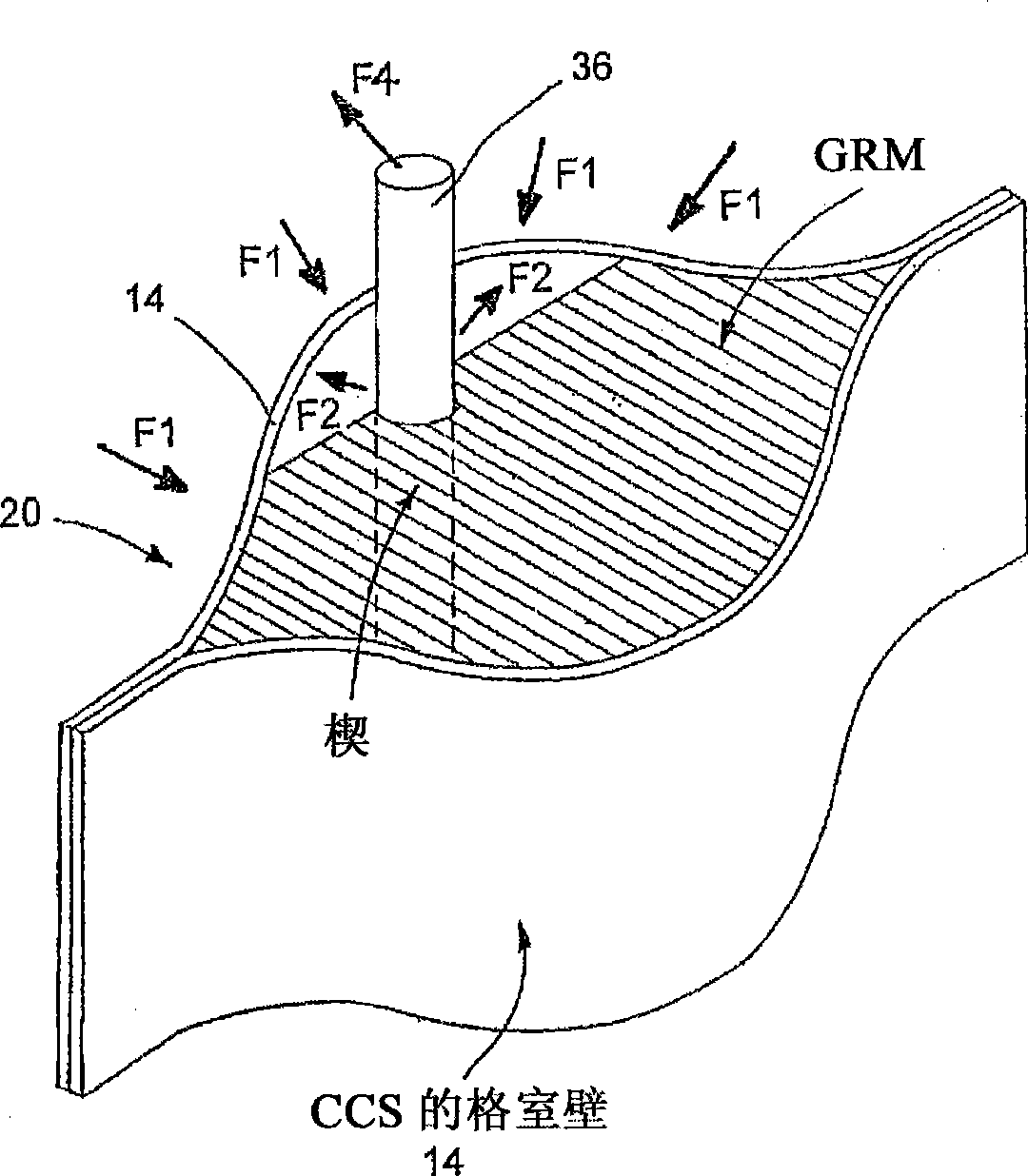UV resistant multilayered cellular confinement system
A cell and system technology, applied in the direction of layered products, synthetic resin layered products, excavation, etc., can solve the problems of limited use, high cost, low modulus and strength characteristics, etc.
- Summary
- Abstract
- Description
- Claims
- Application Information
AI Technical Summary
Problems solved by technology
Method used
Image
Examples
Embodiment 1
[0090] Five UHH-resistant mixes (INV1-INV5) and one reference mix were prepared. Their compositions are shown in Table 1. Additionally, each blend contains 0.5% TiO 2 Pigments (Kronos TM 2222, produced by Kronos) and 0.2% of PV Fast Brown HFR TM Brown pigment (manufactured by Clariant). The polymer, additives and pigments were fed into the main hopper of a co-rotating twin-screw extruder operating at 100-400 RPM with a barrel temperature of 180-240 degrees Celsius. The polymer is melted and the additives are dispersed in at least one kneading zone. Filling is provided by a side feeder. Water vapor and gases are exhausted from the atmospheric vent and the resulting product is pelletized in a strand pelletizer.
[0091] Table 1 Composition of polymers
[0092] Element reference mix
object 1 INV1 INV2 INV3 INV4 INV5 HDPE(Kg) 100 100 100 50 50 50 LLDPE (Kg) 0 0 0 0 50 50 Ethylene-acrylate (Kg) 0 0 0 50 0 0 Mica(...
Embodiment 2
[0110] Five mixtures INV6-INV10 and one reference mixture were prepared. Their compositions are shown in Table 4. Additionally, each blend contains 0.5% TiO 2 Pigments (Kronos TM 2222, produced by Kronos) and 0.2% of PV Fast Brown HFR TM Brown pigment (manufactured by Clariant). The polymer, additives and pigments were fed into the main hopper of a co-rotating twin-screw extruder operating at 100-400 RPM with a barrel temperature of 260-285 degrees Celsius. The polymer is melted and the additives are dispersed in at least one kneading zone. Filling is provided by a side feeder. Water vapor and gases are exhausted from the atmospheric vent and the resulting product is pelletized in a strand pelletizer.
[0111] Table 4 Composition of polymers
[0112] Element reference mix
object 2 INV6 INV7 INV8 INV9 INV10 MA functionalized HDPE
(Kg) 0 100 100 70 40 40 Raw HDPE(Kg) 100 0 0 0 0 0 LLDPE (Kg) 0 0 0 0 30 0 Et...
PUM
| Property | Measurement | Unit |
|---|---|---|
| The average diameter | aaaaa | aaaaa |
| The average particle size | aaaaa | aaaaa |
| Total thickness | aaaaa | aaaaa |
Abstract
Description
Claims
Application Information
 Login to view more
Login to view more - R&D Engineer
- R&D Manager
- IP Professional
- Industry Leading Data Capabilities
- Powerful AI technology
- Patent DNA Extraction
Browse by: Latest US Patents, China's latest patents, Technical Efficacy Thesaurus, Application Domain, Technology Topic.
© 2024 PatSnap. All rights reserved.Legal|Privacy policy|Modern Slavery Act Transparency Statement|Sitemap



